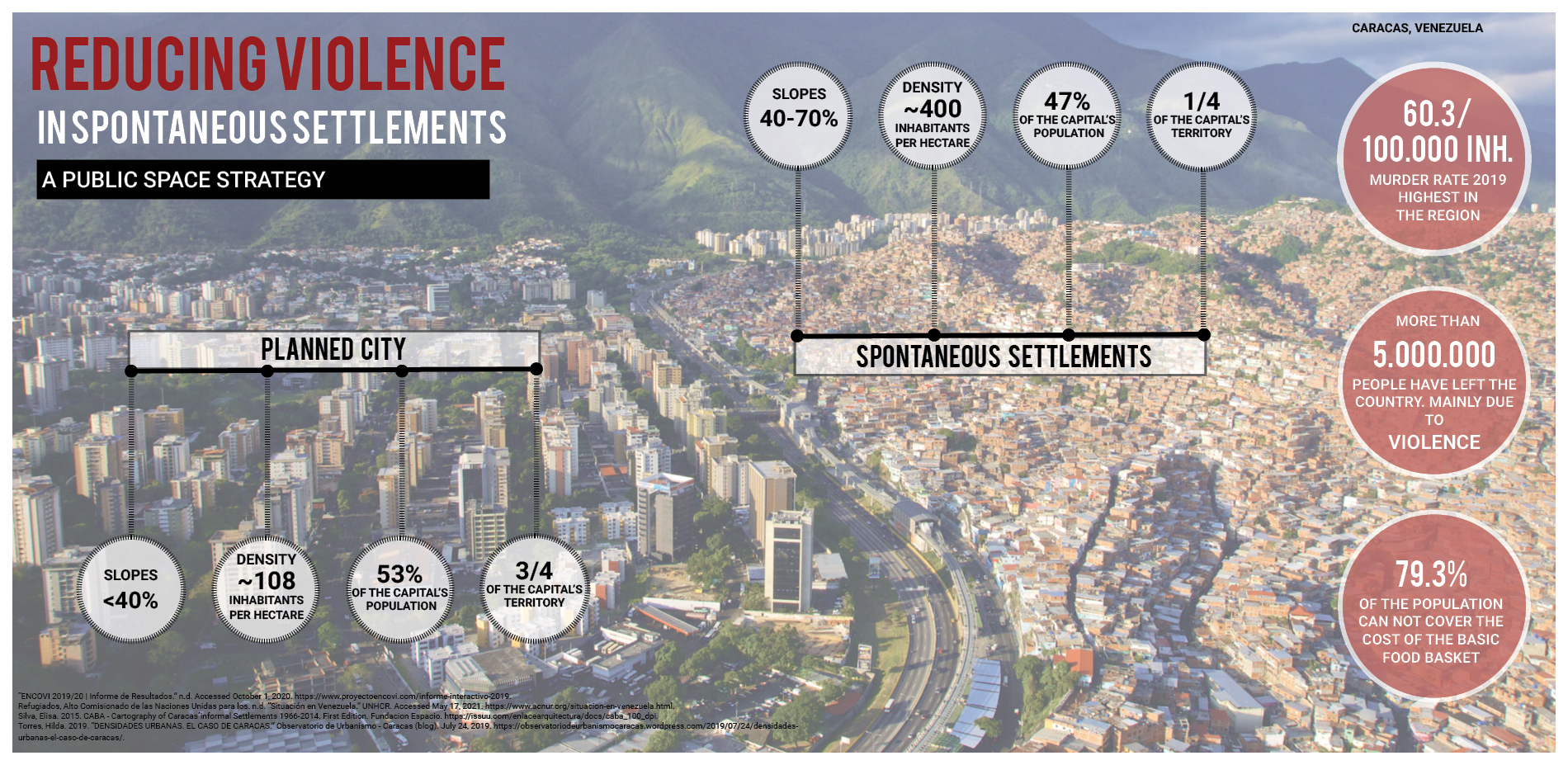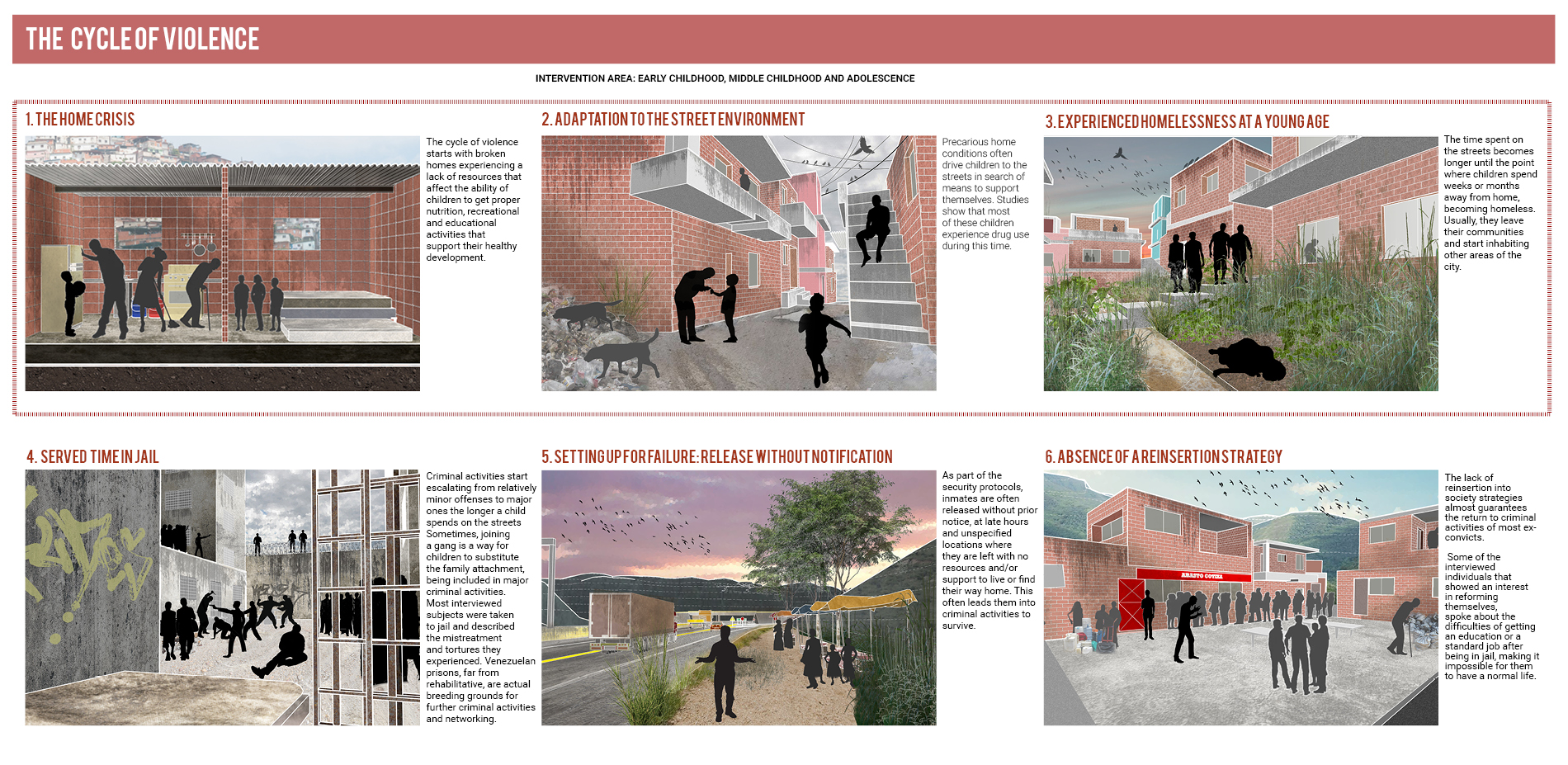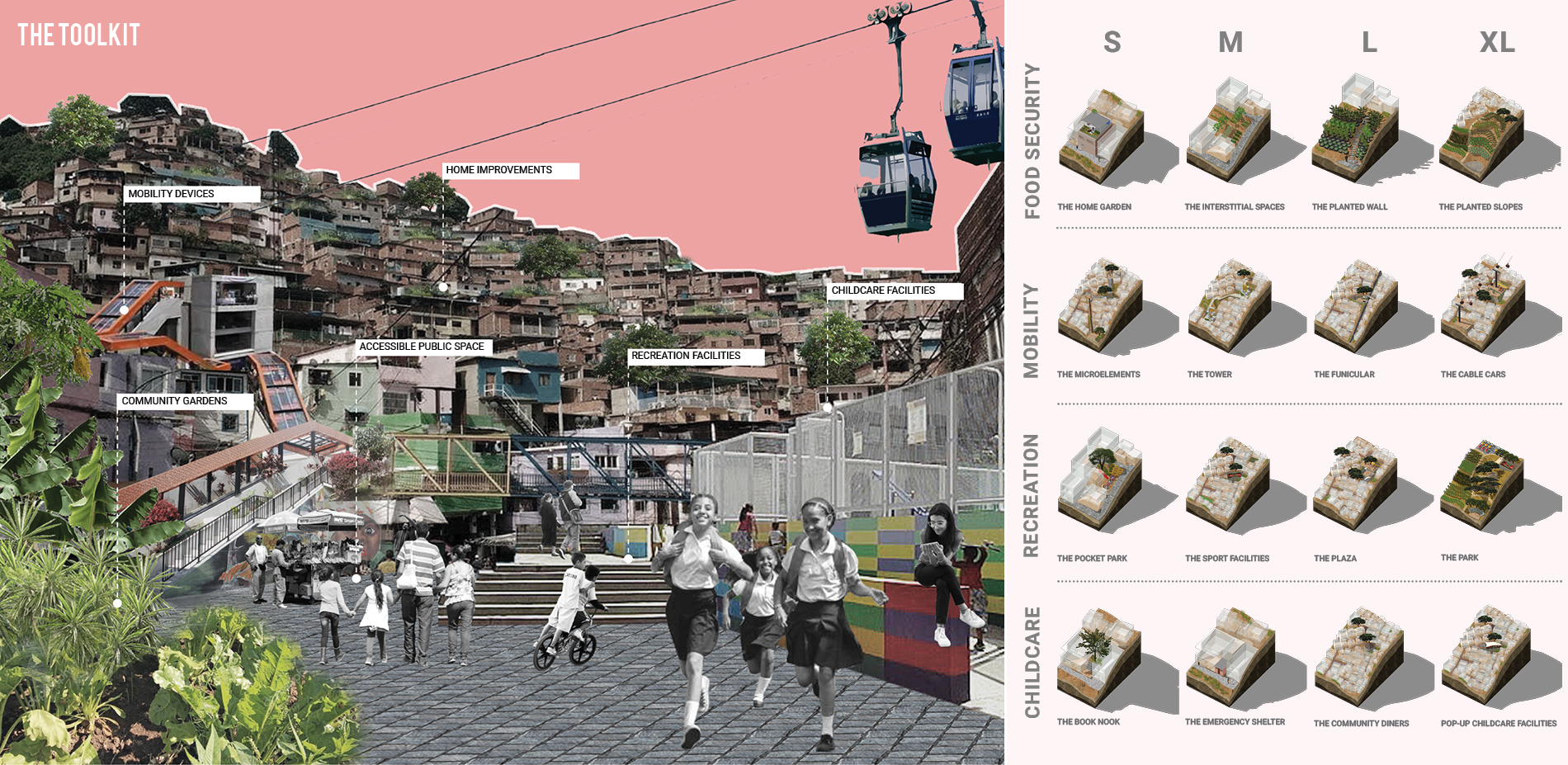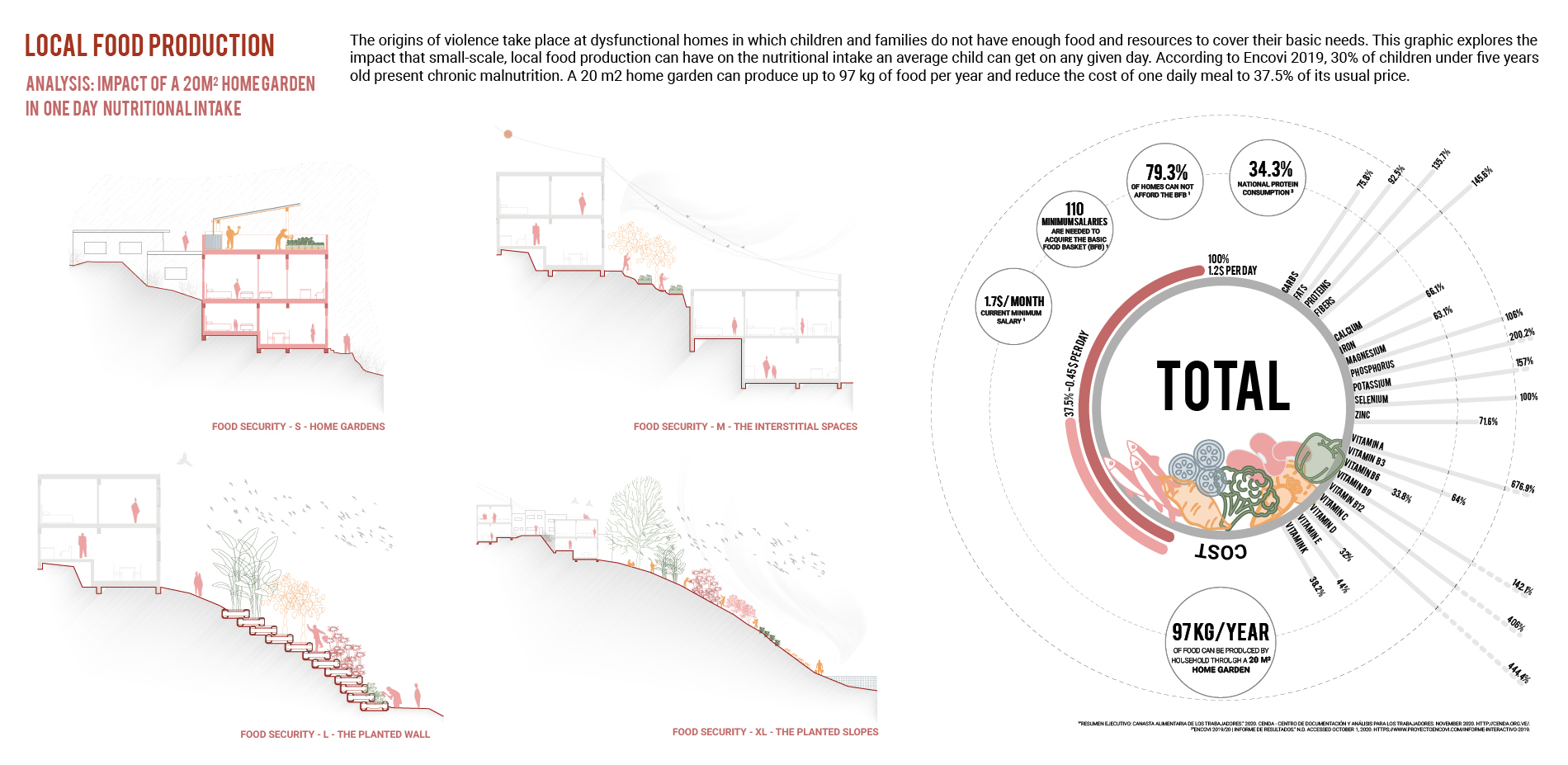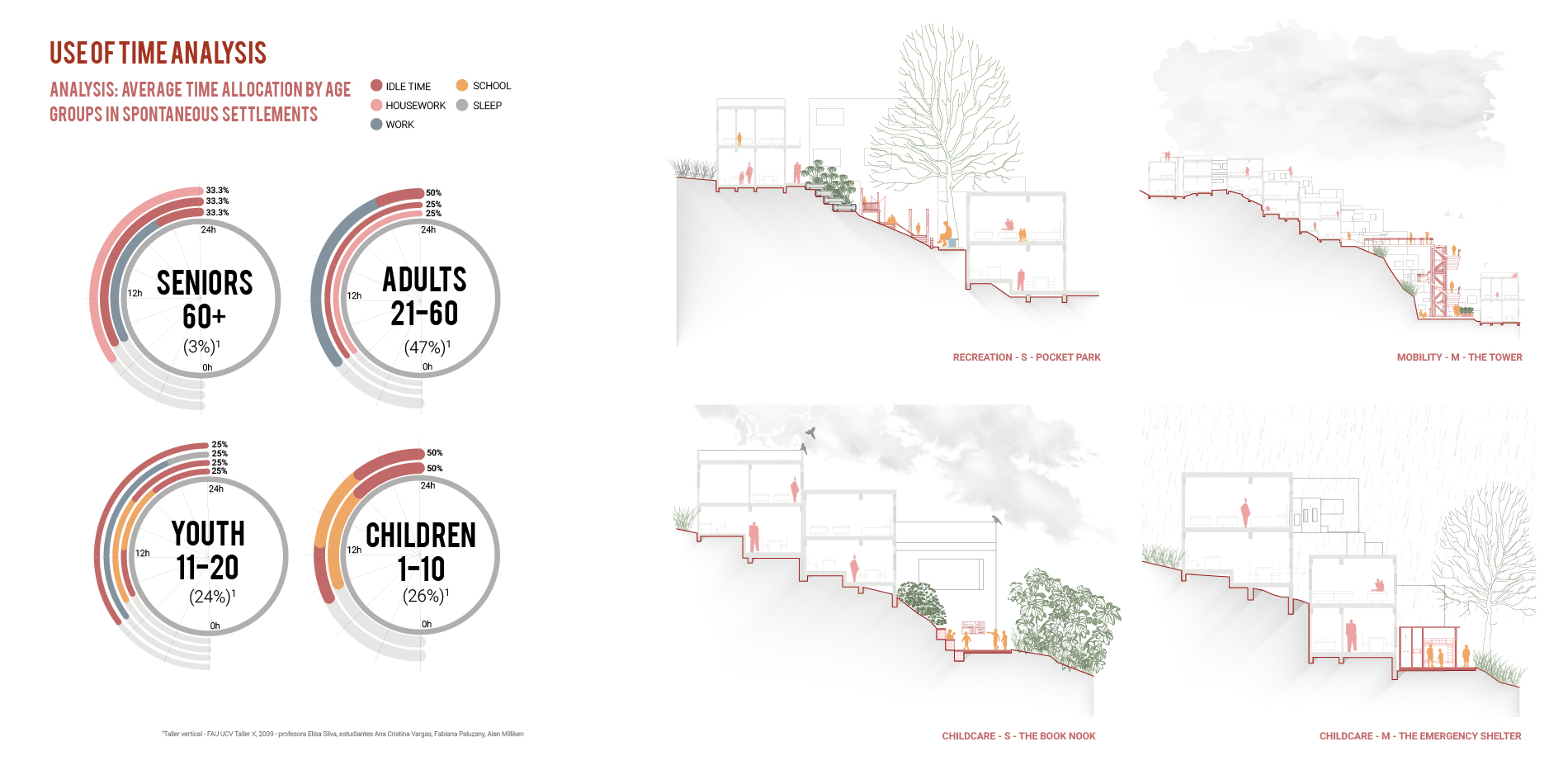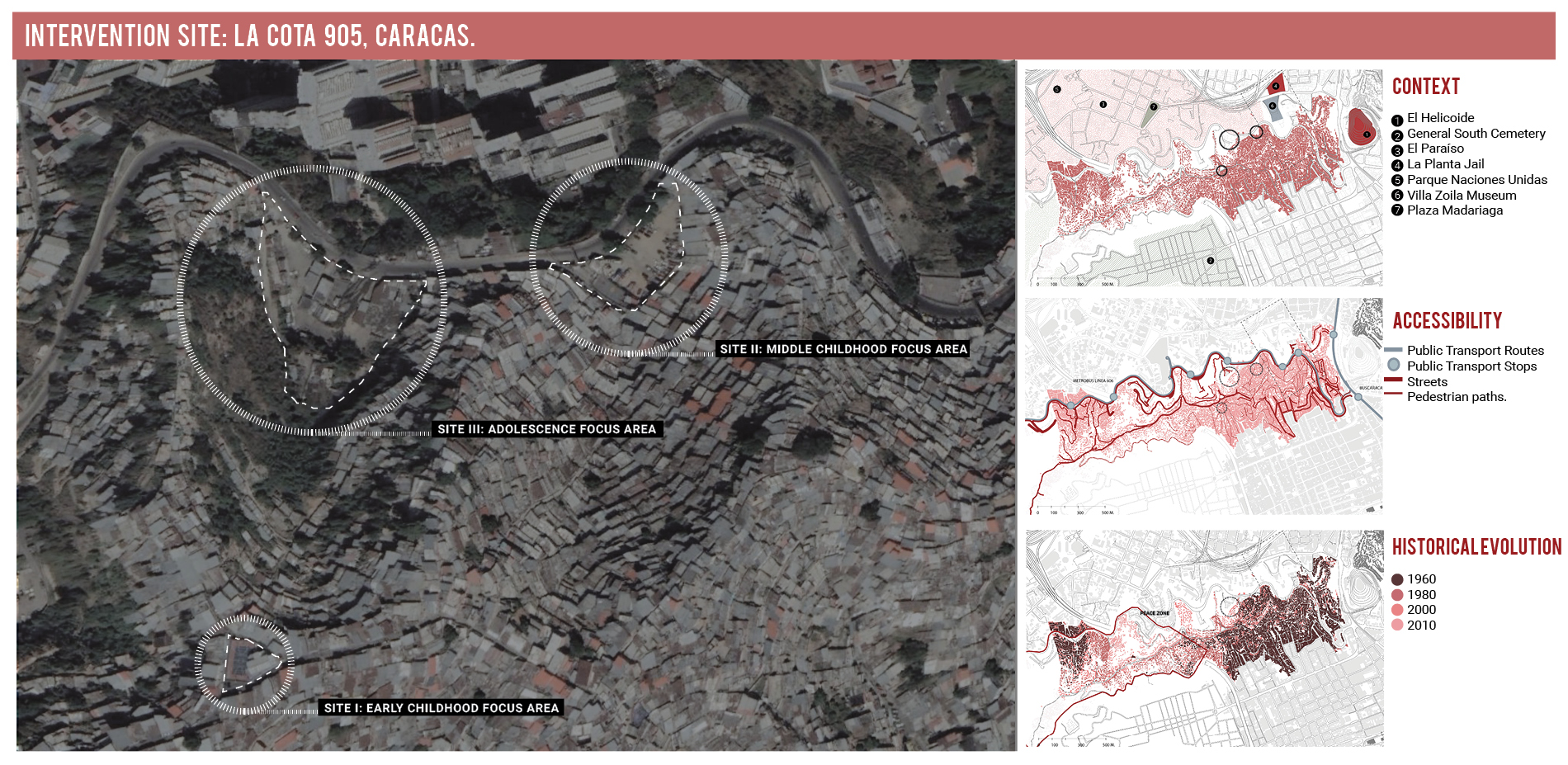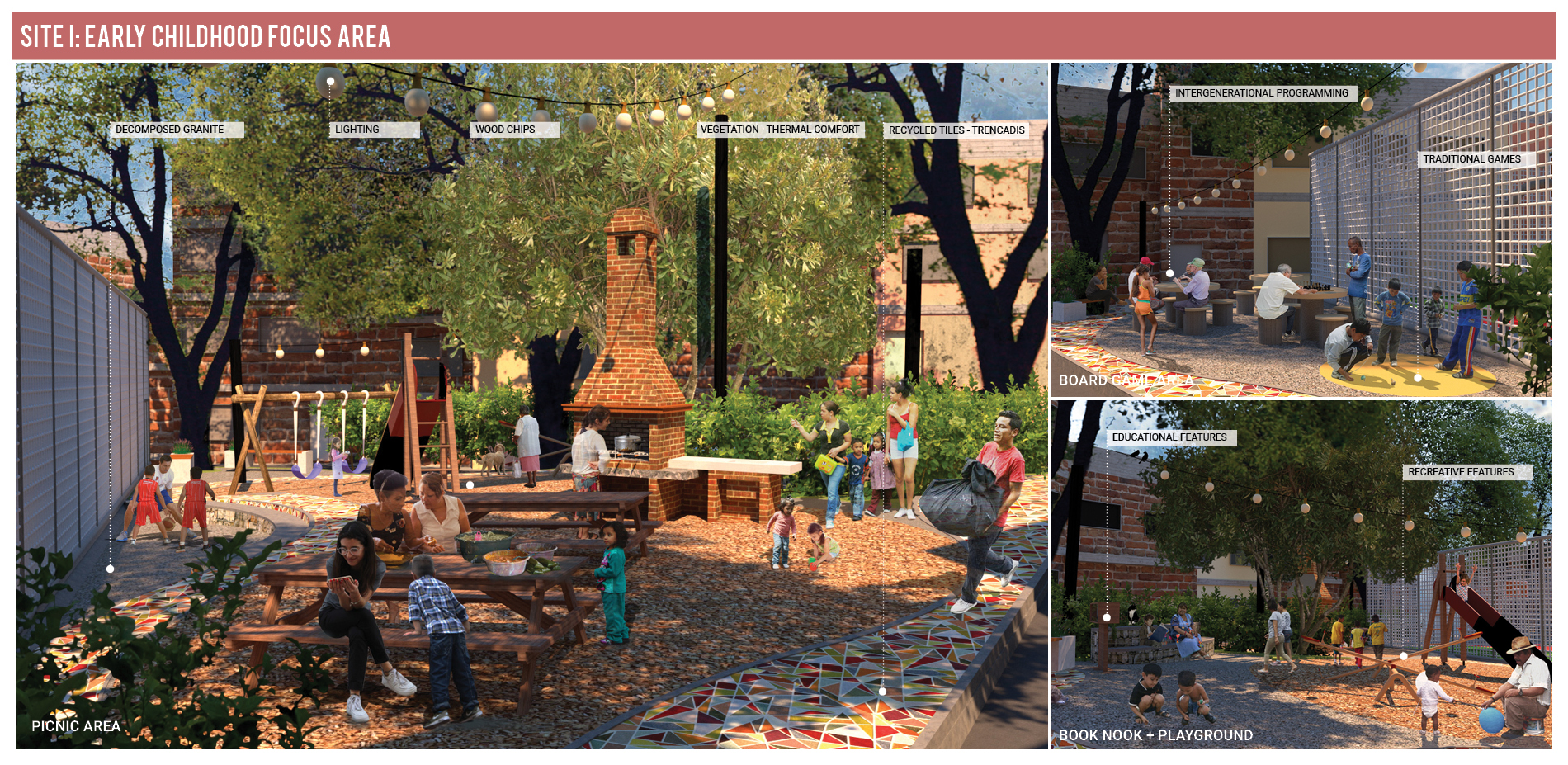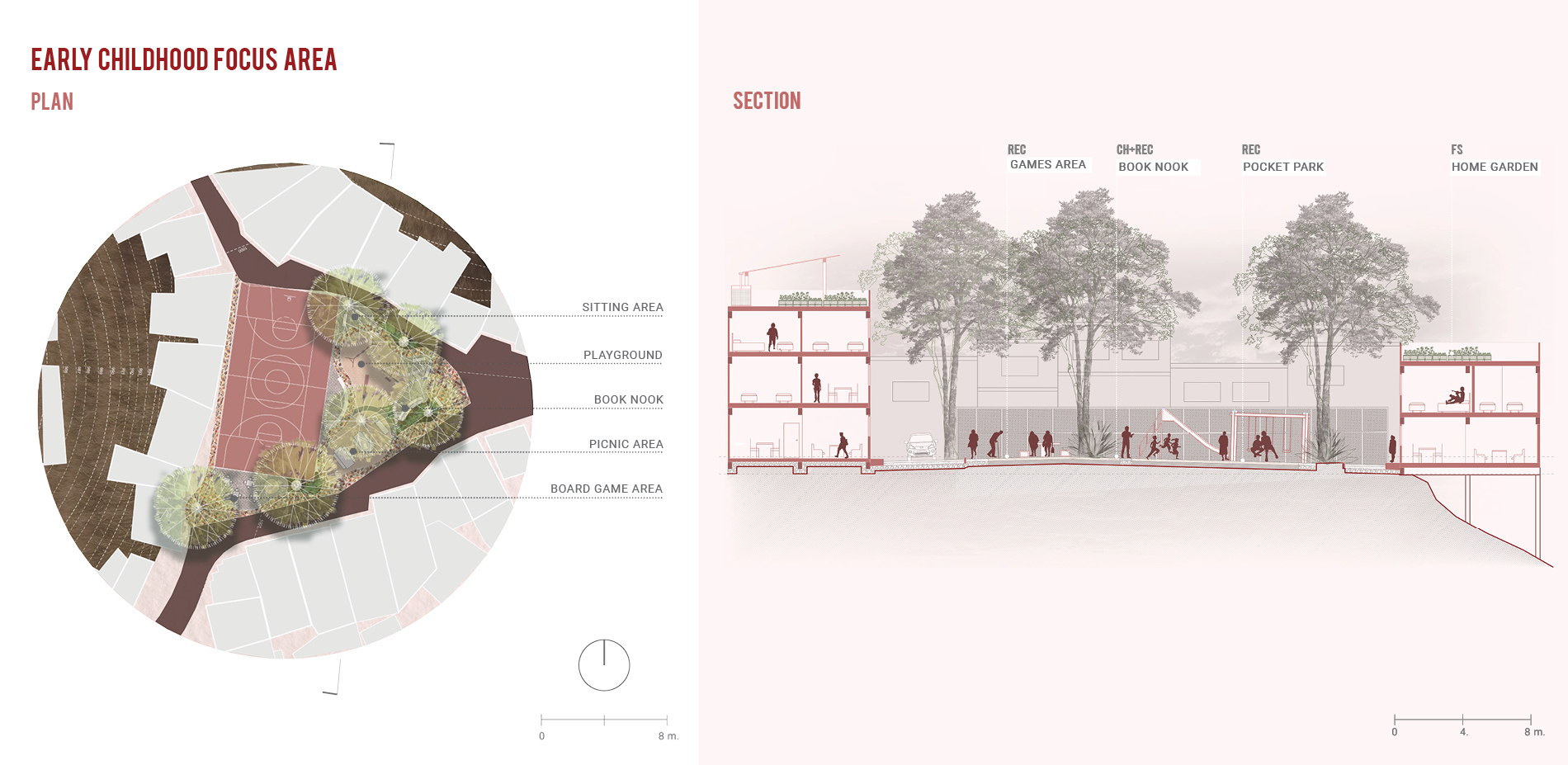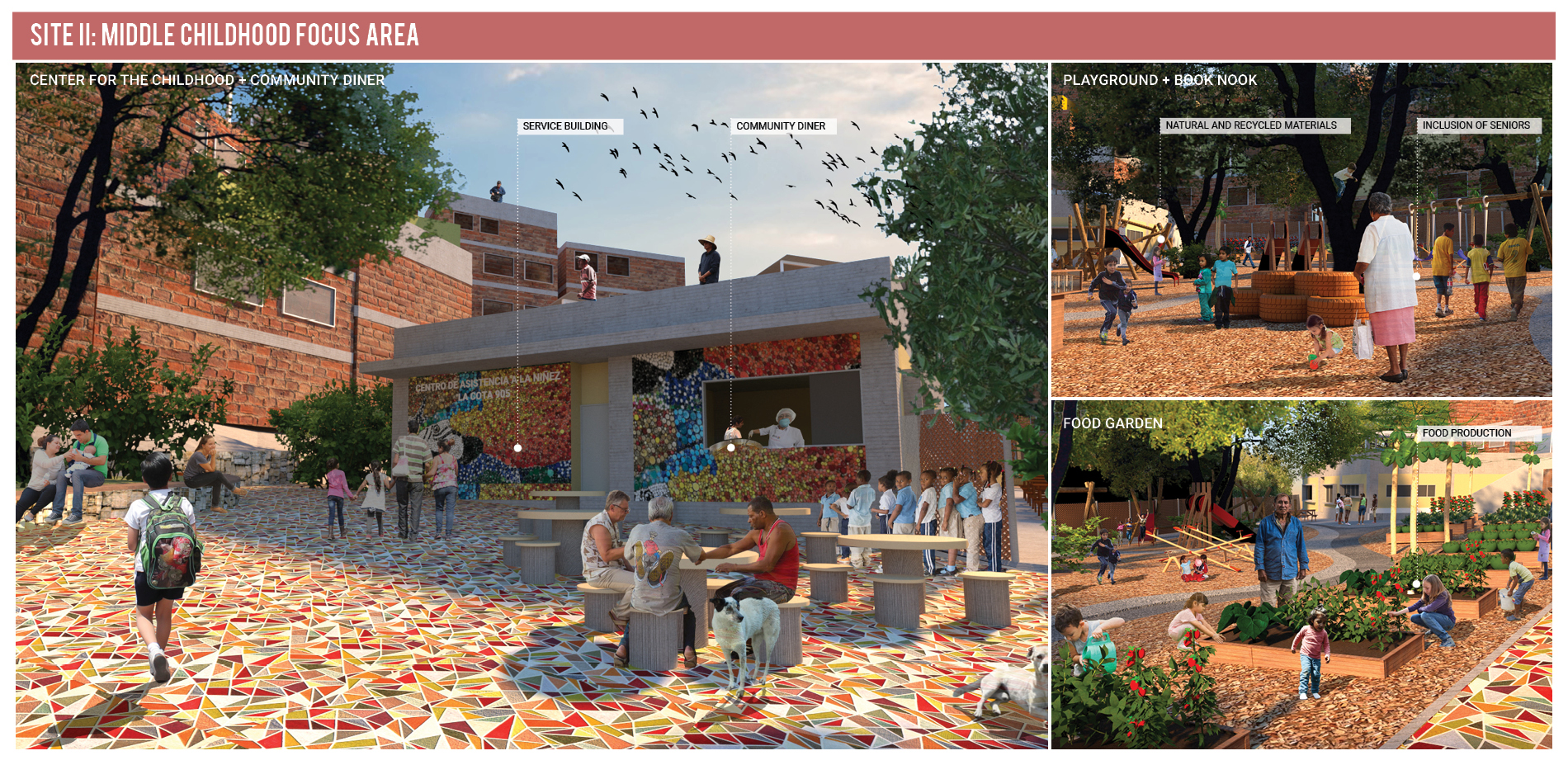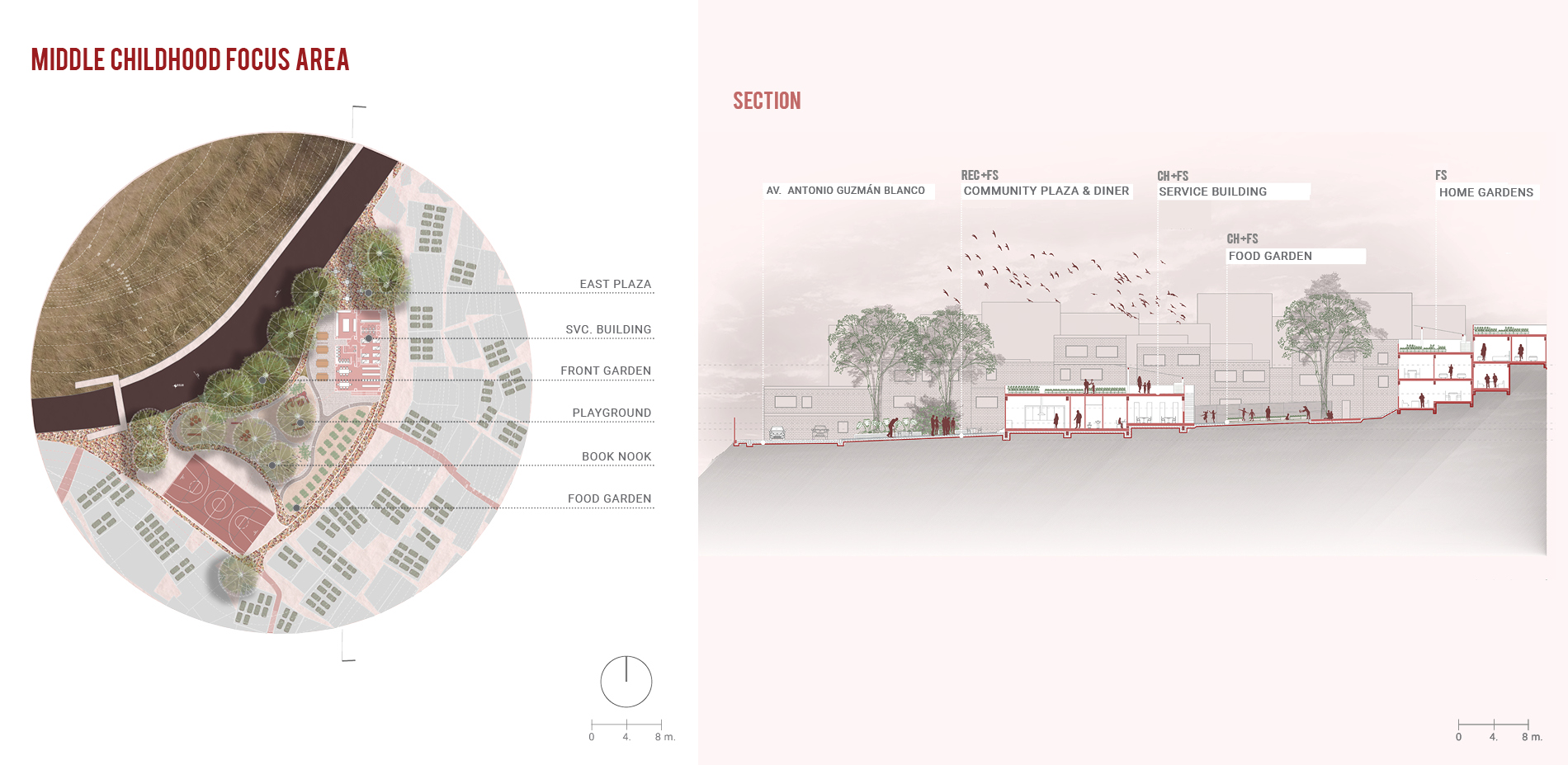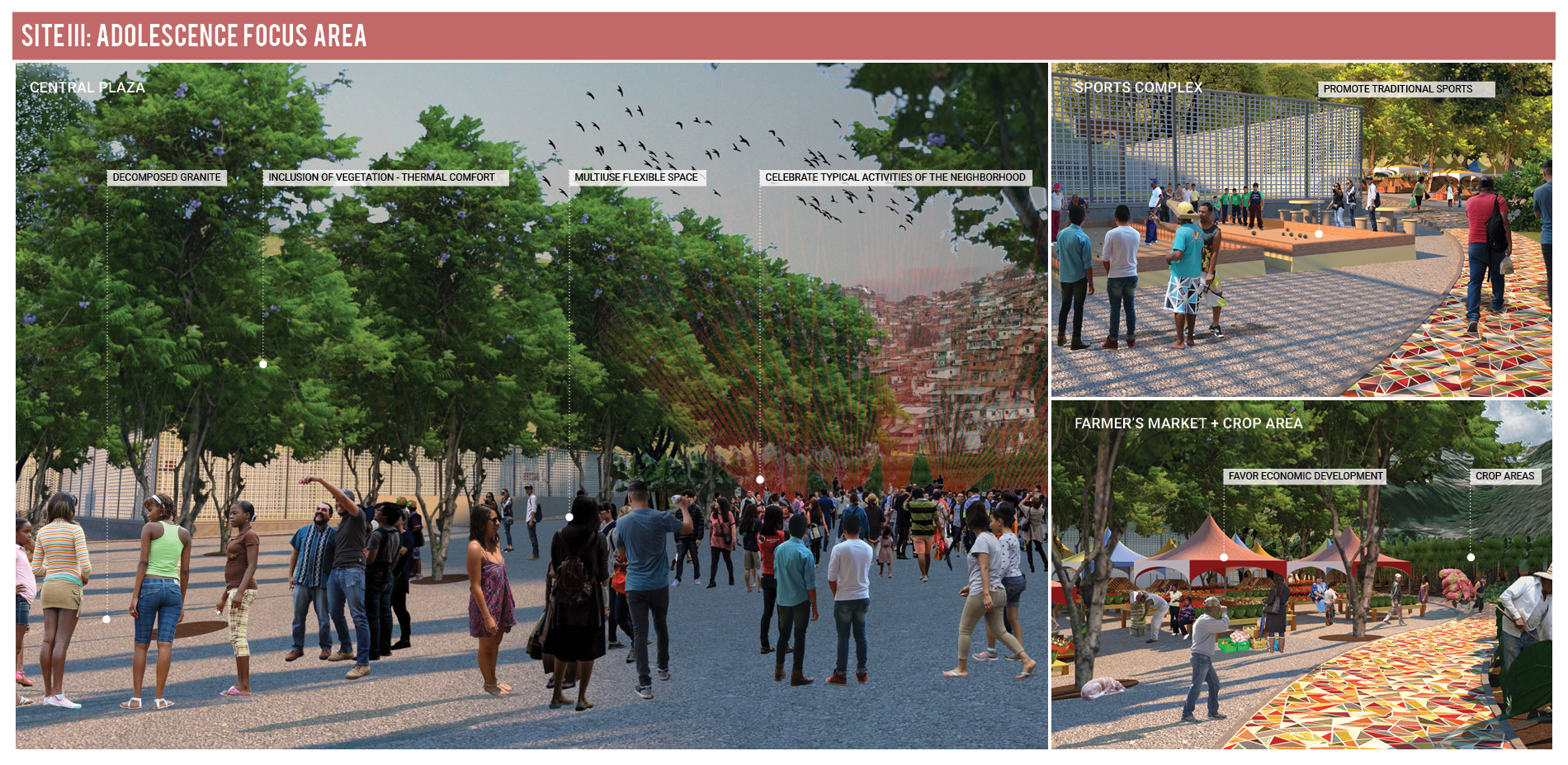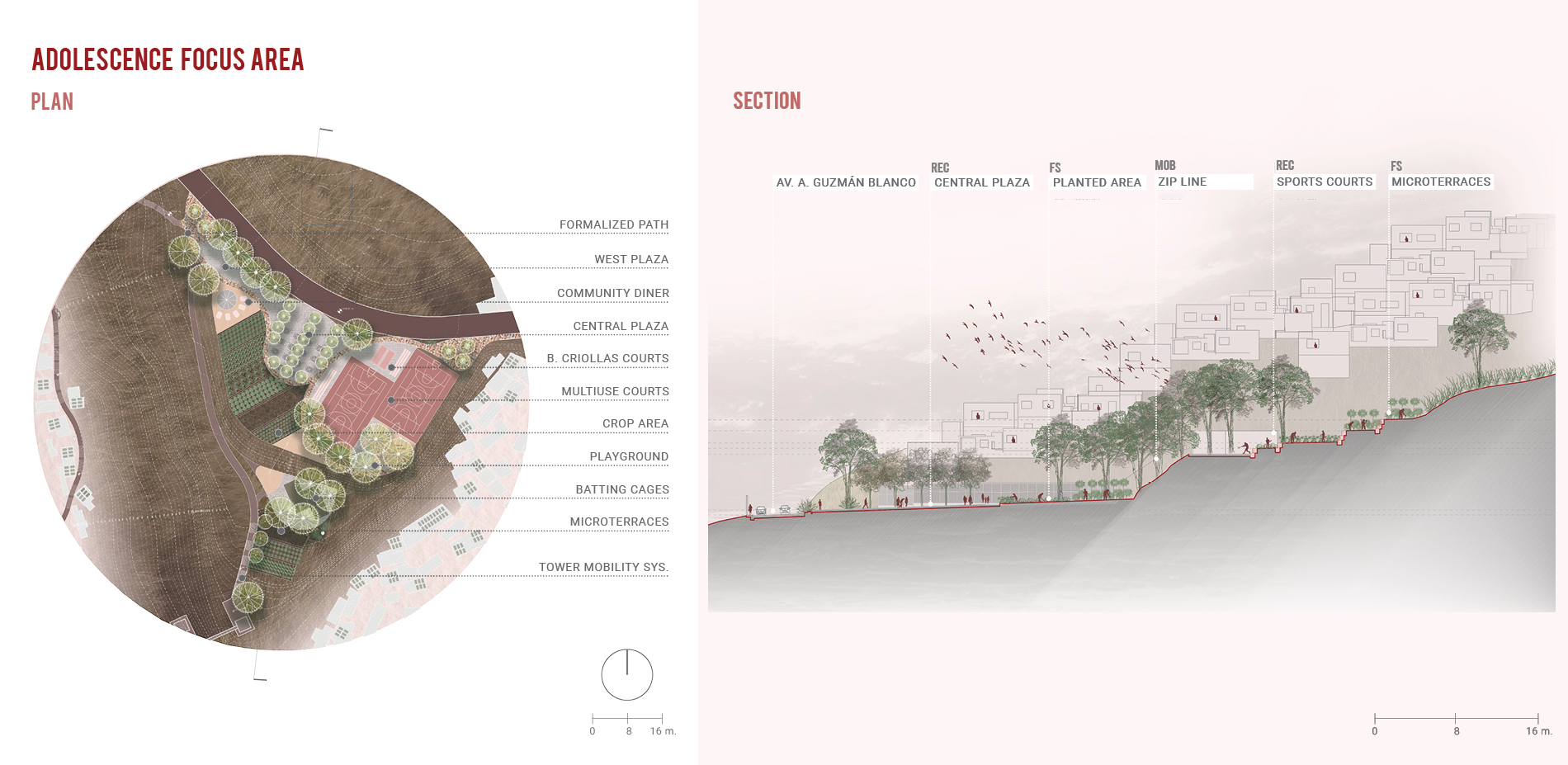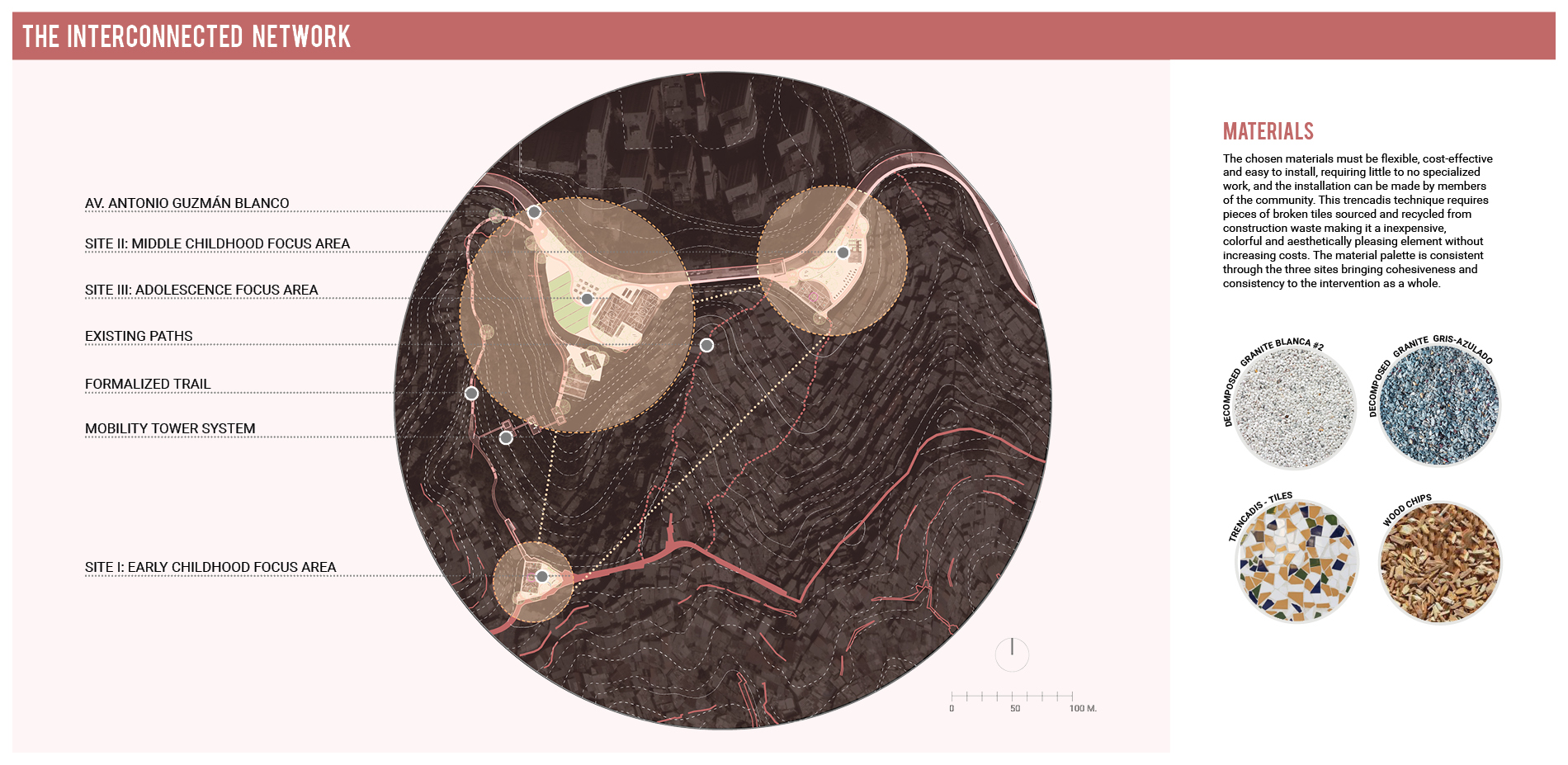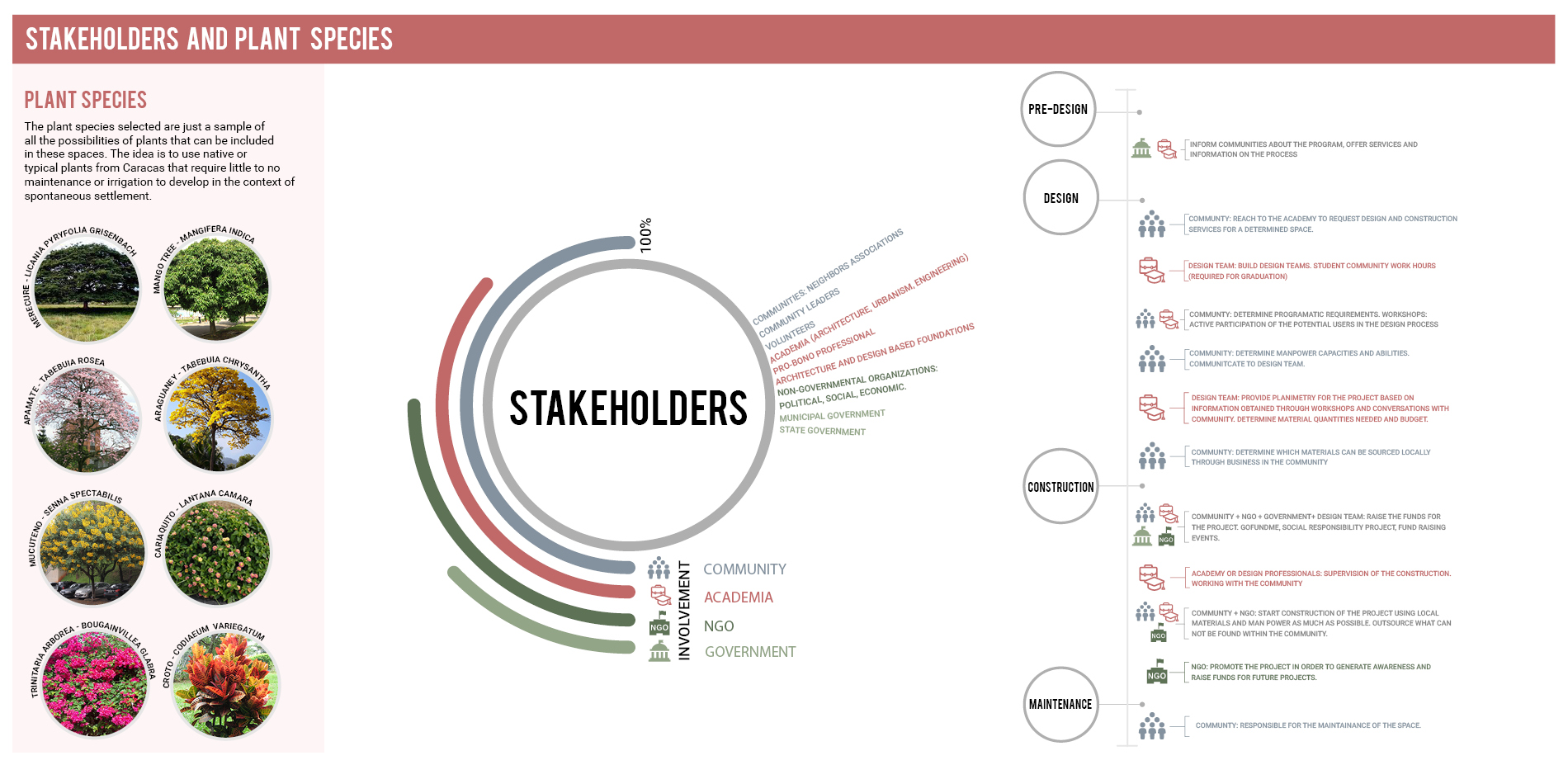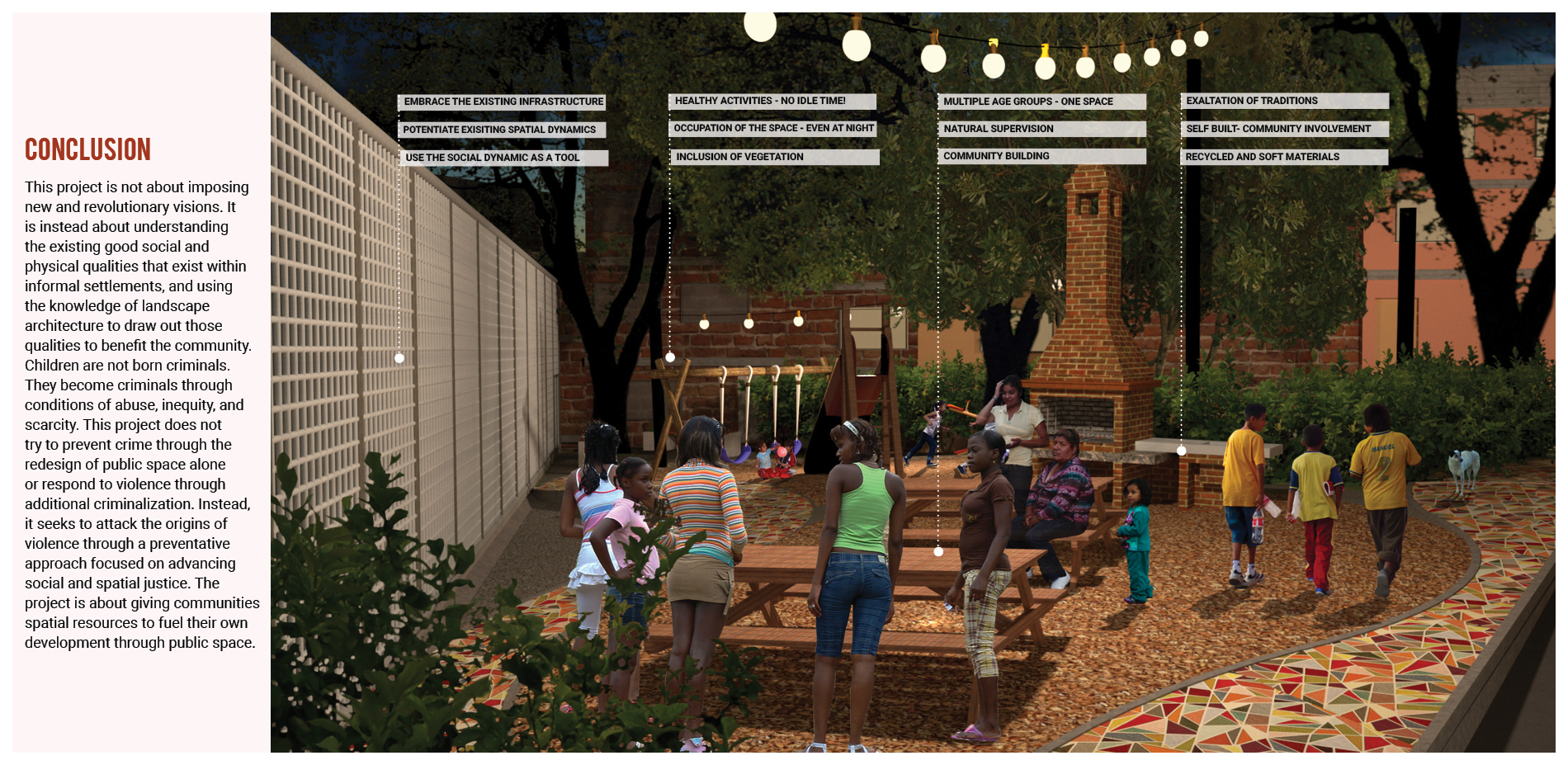Reducing Violence in Spontaneous Settlements: A Public Space Strategy
Honor Award
Urban Design
Caracas, Venezuela
Grace Morazzani Diaz, Student ASLA
Faculty Advisors: Sara Jacobs; Elisa Silva
University of British Columbia
This toolkit clearly hits the criteria of addressing social issues in Caracas, Venezuela, which is important for not only the project but also this category. The way that the team harnessed the existing forces within settlement communities was very compelling, and their ideas are well-integrated within that framework. We also enjoyed the patterns on the proposal which feels very Venezuelan, very culturally and socially grounded.
- 2021 Awards Jury
Project Statement
Caracas, Venezuela is a city of inequalities. The city's informal settlements are marked by stigma of poverty and crime. In these communities, structural misgovernance has turned violent criminal gangs into normalized institutions. Consequently, Caracas is one of the most dangerous cities in the world. In response, this project proposes spatial strategies for reducing risk factors that drive children toward violence as means of survival in informal communities. Using interdisciplinary methods of site analysis and design, the project works with existing community spaces to address food insecurity, childcare and recreation, and mobility through a series of public space interventions. The project departs from typical applications of landscape architecture focused on responses to crime by working within existing community frameworks to focus on the causes of crime and violence. The resulting proposal is at once a celebration of how public space shapes and is shaped by communities, and a reimagination of a Caracas where the future of children and families in informal settlements is free from violence and inequity.
Project Narrative
Informal settlements are self-built areas often located on land deemed unsuitable for construction according to local regulations. In Venezuela, these communities originated with migration from rural to urban areas for economic opportunities during the country’s oil boom beginning in the 1920s. Today, these communities are severely under-resourced and are marked by high rates of poverty and violence. Spatially, the density in informal settlements is easily four times greater than of the planned city, and homes are often built on slopes greater than 40%, creating numerous safety and accessibility challenges. Through a series of public space interventions, this project reimagines the role of landscape architecture to work with existing community contexts to design in response to local materials, topographical conditions, and community needs to reduce the factors that lead to cycles of violence.
Drawing from sociology, psychology, and cartography, the project began by exploring personal stories of cycles of violence in Caracas. This process involved analyzing fourteen stories of people who shared events from childhood that led them into criminal activities. The study revealed six common stages of violence. These stages were used to inform spatial and social interventions to minimize and hinder the cycle of violence. The strategies were then collected into a toolkit of spatial interventions focused on improving living conditions and reducing risk factors that lead children into the cycle of violence. Working toward spatial justice, the project focuses on the causes of violence as spatial and systemic issues, as opposed to responses to violence, which often focuses on individual failings.
The toolkit is structured as a four-by-four matrix of interventions that seek to improve food security, mobility, recreation, and childcare support in informal settlements. Working across four different scales, these strategies focus on creating safe homes for children and adults by supplying food to homes that cannot afford it and providing supervised recreational programming to occupy idle time in children and adolescents. The spatial tools generated from the toolkit are intended to work together to create constant support and supervision of children at three different life stages and throughout the day. The resulting strategies are multi-scalar and multi-generational, and are meant to be adapted to become site-specific and community led.
The strategies developed during the research phase and toolkit are adapted as a series of place-specific interventions in an informal settlement known as La Cota 905. Currently, La Cota 905 is known for its high levels of violence and is currently governed by a powerful criminal gang. La Cota 905 runs along Antonio Guzman Blanco Avenue in southwest Caracas and has slopes ranging between 40 and 70%. The area is designated as a "peace zone", meaning that police and other security forces cannot enter and intervene in the area. The three proposed interventions work as a connected network to respond to needs of children and adolescents within this community.
The Early Childhood Focus Area is the first intervention and is located at the highest topographic point in the community. The design utilizes the surrounding ground of an existing basketball court to create a space focused on early childhood programming and needs. The Early Childhood Focus Area represents how a small space could be designed to provide a space for young children to be under the constant supervision of adults. The intervention creates a community around childcare by supporting programs for adults and children alike. The design includes a playground, a book nook, an area for board games, and multiple sitting configurations around the existing basketball court. The design also includes a picnic area with a coal kitchen for holding small events and community celebrations, as is common and traditional in the area. The intergenerational focus of this intervention and embrace of traditional activities guarantees that there will be constant support from community elders.
Next, the Middle Childhood Focus Area is located on the grounds of an existing mechanical workshop. This second intervention targets middle-aged childhood needs and aims to provide childcare services to the community and assistance to its most vulnerable members. The Middle Childhood Focus Area includes multiple outdoor areas for recreation and a service building that offers educational programming, including an internet room, a library, a community kitchen, and washrooms. This childcare complex relies on active seniors to participate in the care of the children as an opportunity to generate income and build stronger community ties, while making childcare services affordable for parents. This provides a solution to the issue of unsupervised kids running the risk of ending up in undesirable situations. Depending on the availability of resources, the space can be subdivided and implemented into three phases. The first one is the east plaza, part of the front garden, and the building, to start functioning as a small childcare center. Second, the book nook and the playground, and third the food garden and all connecting paths. These services within the Middle Childhood Focus Area aim to ease the burden of parents, reduce risk factors, and keep children from leaving their communities at an early age.
Lastly, The Adolescent Focus Area is composed of three programmatic areas arranged to create a space that serves multiple age groups. The first area is the sports complex. The intention is to host sports tournaments and practices that bring the youth of La Cota 905 together with the youth of other areas in Caracas around sports and teamwork. The second element relates to food security. Eighteen hundred square meters of crop area plus a community dinner are devoted to increasing local food production. The focus on community food production introduces adults to the space and encourages young people to learn about food production from older community members. The final element is two flexible plazas. Programming for these spaces will be determined based on community needs but are the appropriate size for artisan and food community markets or to host community gatherings. The Adolescent Focus Area could be phased over four periods to plan and develop each space to align with community needs.
The three proposed interventions work at varying scales to form a comprehensive public space strategy for the community. Together they create an interconnected network of public spaces that respond to the existing community dynamic to support children of all ages. The construction materials for each proposed space are drawn from a shared palette of materials that are affordable and easy to acquire. The three spaces work with existing site conditions to maintain already present homes, shops, and roads. They are connected using existing footpaths and roadways. The planned future formalization of the west trail into a stair and sidewalk system would further increase connectivity on the west side of the neighborhood. Finally, a mobility tower system is proposed to ease the connection between the Early Childhood Focus Area and the Adolescent Focus Area, helping navigate the almost 100 meters vertical distance between these two locations. The self-built character of informal settlements should be seen as a resource to designers. Maintaining the community’s role at the core of the planning and construction ensures their continued agency to build, upgrade, and maintain these spaces.
This project is not about imposing new and revolutionary visions. It is instead about understanding the existing good social and physical qualities that exist within informal settlements, and using the knowledge of landscape architecture to draw out those qualities to benefit the community. Children are not born criminals. They become criminals through conditions of abuse, inequity, and scarcity. This project does not try to prevent crime through the redesign of public space alone or respond to violence through additional criminalization. Instead, it seeks to attack the origins of violence through a preventative approach focused on advancing social and spatial justice. The project is about giving communities spatial resources to fuel their own development through public space.
Plant List:
- Merecure - Licania pyryfolia grisenbach
- Mango tree - Mangifera indica
- Apamate - Tabebuia rosea
- Araguaney - Tabebuia chrysantha
- Mucuteno - Senna spectabilis
- Cariaquito - Lantana camara
- Trinitaria arborea - Bougainvillea glabra
- Croto - Codiaeum variegatum
